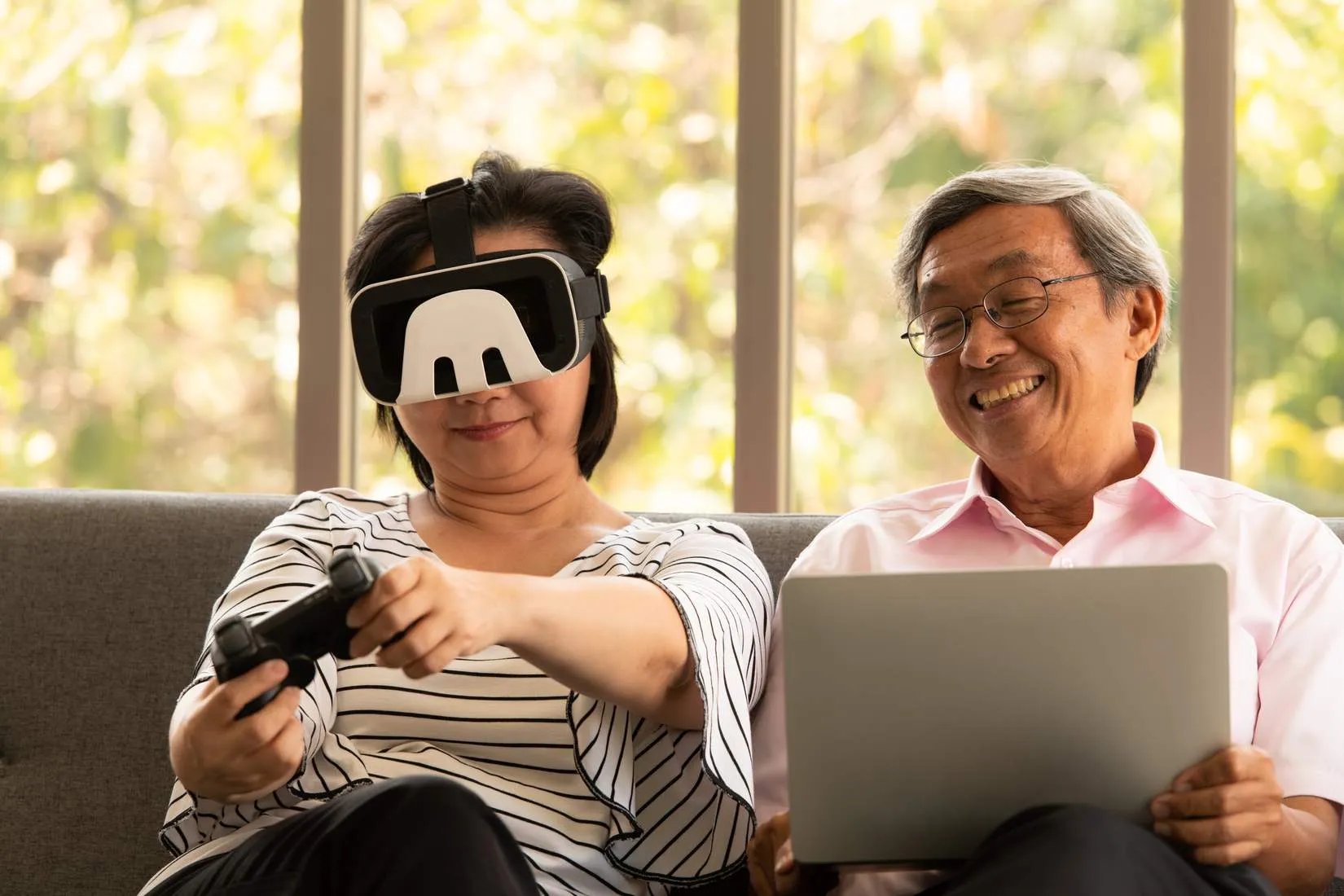In a world driven by technological advancements, it's always thrilling to witness the arrival of new gadgets that push the boundaries of innovation. From sleek smartphones to intelligent wearables and futuristic smart home devices, the latest tech gadgets continue to captivate us with their remarkable features and potential to transform our lives. In this blog post, we delve into some of the most exciting tech gadgets of recent times, leaving us eagerly anticipating what the future holds.
A tech support membership can help you keep with the steep learning curve of developing technology. Choose HelpCloud as your trusted provider for support on any at-home tech issue.
Smartphones Redefined
In the ever-evolving landscape of technology, smartphones have emerged as the epitome of innovation and convenience. The latest generation of smartphones goes beyond mere communication devices, offering a multitude of features that enhance productivity, entertainment, and connectivity. Let's explore how smartphones have been redefined in recent times and the exciting advancements that have left us in awe.
Foldable Displays
One of the most significant advancements in smartphones is the reintroduction of foldable displays. Brands like Samsung, Motorola, and Huawei have pioneered this technology, allowing users to enjoy the best of both worlds – a large tablet-like display for immersive media consumption and a compact form factor for portability. Foldable smartphones have the potential to revolutionize the way we interact with our devices, offering a seamless transition between different screen sizes and enhancing multitasking capabilities.
Smartphone Camera Technology
The camera technology in smartphones has also witnessed remarkable improvements, transforming the way we capture and share moments. With the advent of multiple lenses, larger sensors, and advanced computational photography techniques, smartphones now offer professional-grade photography capabilities in the palm of our hands. Features like Night Mode enhance low-light photography, while artificial intelligence algorithms optimize image processing, resulting in stunning photos and videos. The ability to capture high-resolution images, record 4K videos, and apply sophisticated editing tools directly on our smartphones has made photography more accessible and enjoyable for enthusiasts and professionals alike.

Performance and Battery Life
Performance has always been a crucial aspect of smartphones, and the latest models have taken it to new heights. Faster processors, increased RAM, and optimized software ensure smooth multitasking, lag-free gaming experiences, and speedy app launches. These advancements not only cater to power users who demand seamless performance but also contribute to the overall user experience by reducing waiting times and enhancing productivity.
Battery life has long been a concern for smartphone users, but recent advancements have addressed this issue to a great extent. More efficient processors, improved battery management algorithms, and larger battery capacities have extended the usage time between charges. Additionally, fast charging technologies enable users to quickly replenish their battery levels, reducing downtime and keeping them connected for longer periods.
As smartphones continue to evolve, the focus on software and user interfaces is equally crucial. Manufacturers are investing in intuitive user interfaces and feature-rich software to provide seamless and personalized experiences. User interfaces are becoming more streamlined and customizable, enabling users to tailor their smartphone experience to their preferences. Additionally, features like digital well-being tools, enhanced privacy settings, and intelligent digital assistants contribute to a holistic user experience that promotes well-being and productivity.
Wearable Marvels
Wearable technology has made significant strides in recent years, revolutionizing the way we interact with our devices and augmenting our daily lives. From smartwatches and fitness bands to augmented reality (AR) glasses, these wearable marvels have become integral parts of our lifestyles, providing us with personalized information, health insights, and seamless connectivity. Let's delve deeper into the world of wearables and explore the exciting advancements that continue to captivate us.

Smartwatches and Fitness Bands
Smartwatches have emerged as one of the most popular and versatile wearable devices. These wrist-worn companions offer a range of features that extend beyond simply telling the time. Smartwatches act as a central hub, delivering notifications, calls, and messages from our smartphones directly to our wrists, ensuring that we stay connected without the need to constantly check our phones. They also provide convenient access to a variety of apps, such as calendars, weather updates, and navigation tools, right at our fingertips.
In addition to connectivity, smartwatches have evolved into powerful health and fitness trackers. Equipped with sensors that monitor heart rate, sleep patterns, and activity levels, these wearables help users gain valuable insights into their well-being. By analyzing data such as steps taken, calories burned, and sleep quality, smartwatches encourage users to lead healthier lifestyles and set fitness goals. Furthermore, many smartwatches offer guided workouts, breathing exercises, and reminders to move, promoting overall physical and mental well-being.
Fitness bands, often worn on the wrist, have also gained popularity for their targeted health and fitness tracking capabilities. These lightweight and sleek devices focus primarily on monitoring activity levels, heart rate, and sleep quality. Fitness bands provide real-time feedback, encouraging users to stay active and make healthier choices throughout the day. With long battery life and water-resistant designs, they are ideal for tracking workouts, outdoor activities, and even swimming.

Augmented Reality Glasses
Augmented reality (AR) glasses represent a new frontier in wearable technology, offering a glimpse into the future of connected experiences. AR glasses overlay digital information onto the real world, enriching our surroundings with contextually relevant data and interactive content. From providing step-by-step directions and real-time translations to offering immersive gaming and educational experiences, AR glasses open up a world of possibilities. They have the potential to revolutionize industries such as manufacturing, healthcare, and education, by providing hands-free access to critical information and enhancing productivity and efficiency.
Smart Clothing
Moreover, smart clothing and wearable accessories are expanding the horizons of wearable technology. Smart garments embedded with sensors and conductive fibers can track body temperature, monitor vital signs, and even detect posture and movement. These intelligent clothing items offer applications in sports performance monitoring, healthcare, and even fashion. Wearable accessories, such as smart rings and smart glasses, provide discreet and convenient access to notifications, calls, and health data.
The integration of artificial intelligence (AI) and machine learning algorithms further enhances the capabilities of wearables. By analyzing the data collected from sensors and user interactions, wearables can provide personalized insights and recommendations. For example, a smartwatch may offer customized fitness plans based on an individual's goals and progress, while AR glasses can adapt to a user's preferences and provide personalized information based on their context and surroundings. This personalized approach ensures that wearables cater to the unique needs and preferences of each user.
As wearables continue to evolve, their potential impact reaches far beyond individual users. The wealth of data collected by these devices can contribute to advancements in medical research, population health management, and the development of personalized treatments. Wearables have the ability to empower individuals to take control of their health and well-being while contributing to the advancement of healthcare as a whole.
Immersive Gaming Experiences
The gaming industry has always been at the forefront of technological advancements, constantly pushing the limits of what's possible. In recent years, we have witnessed a significant leap in immersive gaming experiences that blur the boundaries between reality and virtual worlds. From virtual reality (VR) to augmented reality (AR), these technologies have revolutionized the way we play games, creating truly captivating and transformative experiences.
Virtual reality (VR) gaming has garnered immense attention and enthusiasm from gamers worldwide. VR headsets transport players into virtual environments, completely immersing them in a digital realm. By combining high-resolution displays, motion tracking sensors, and spatial audio, VR creates a sense of presence that makes players feel as if they have stepped into another world. Whether exploring fantastical landscapes, engaging in intense first-person shooter battles, or solving intricate puzzles, VR provides an unprecedented level of immersion that traditional gaming experiences simply cannot match.

With VR, players can physically interact with the virtual environment using motion controllers or even their own body movements, further enhancing the sense of immersion. For example, swinging a virtual sword or reaching out to grab objects in a game feels natural and responsive. The ability to explore and interact with virtual worlds in such a tactile and intuitive manner adds a new dimension to gaming, amplifying the thrill and excitement.
In addition to VR, augmented reality (AR) has also emerged as a transformative technology in gaming. AR overlays digital elements onto the real world, blending fantasy with reality. Games like Pokémon Go became global phenomena, demonstrating the potential of AR in capturing the imagination of millions of players. Using smartphones or specialized AR glasses, players can see virtual characters or objects seamlessly integrated into their physical surroundings, creating a truly interactive and engaging experience.
AR technology also opens up new possibilities for social gaming experiences. Imagine playing a cooperative multiplayer game where you and your friends battle virtual enemies that appear in your living room or embark on treasure hunts that lead you to real-world locations. AR enhances social interaction by allowing players to share their gaming experiences in a collaborative and immersive manner, blurring the line between gaming and reality.
Furthermore, advancements in graphics technology and game design have contributed to the immersion factor in gaming. Realistic graphics, detailed textures, and lifelike animations create visually stunning and believable worlds. Combined with immersive audio design and spatial sound technology, these elements transport players into richly crafted environments that stimulate their senses and evoke emotions.
The rise of eSports and virtual reality arcades has also fueled the popularity of immersive gaming experiences. Competitive gaming tournaments held in VR create a sense of presence and intensity for both players and spectators. VR arcades provide an accessible and affordable way for people to experience high-quality VR gaming without the need for expensive equipment, allowing them to immerse themselves in a wide range of VR games and experiences.
Conclusion
As technology continues to advance, the future of immersive gaming holds even more exciting possibilities. The development of haptic feedback systems, which provide physical sensations through vibrations or pressure, will further enhance immersion by allowing players to feel the impact of their actions within the virtual world. Advances in eye-tracking technology and gesture recognition may enable more natural and intuitive interactions with virtual environments.


